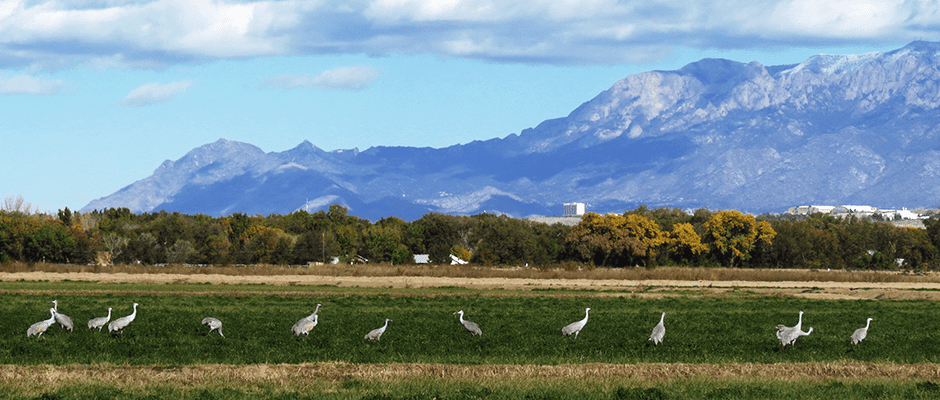Share this article
See a wildlife refuge grow at 2017 TWS Annual Conference
The Valle de Oro National Wildlife Refuge in Albuquerque, N.M., isn’t your typical wildlife refuge – it’s a small grassy field that recently supported a dairy farm. On a field trip planned for TWS’ 24th Annual Conference, learn how community engagement is helping restore this area for wildlife in an underserved, polluted neighborhood.
“National wildlife refuges don’t normally buy a farm in an urban area,” said Jennifer Owen-White, the refuge’s manager. “We’re different. This was the last remaining large chunk of green space in the Albuquerque area. The community fought hard to keep industrial facilities from moving in. We want people to be a part of the decision-making process and feel invested in the restoration.”
The two-hour trip will start with an introduction to the refuge, its history and its public role. Tour the site with Owen-White and check out its citizen science research and education programs. Then head to the bosque, the riparian habitat along the Rio Grande, to understand the refuge’s place in the greater ecosystem. By the end of the trip, you’ll discover how Valle de Oro will be transformed into better wildlife habitat with the establishment of wetlands, restoration of upland and riparian regions and drainage of stormwater.
Open to the public from the moment of its founding in 2012, Valle de Oro still looks like a dairy farm. Restoration will begin around the time of the tour, Owen-White said, and it’ll take about five years to set up the infrastructure needed to nurture wildlife habitat there.
“The story is exciting,” she said. “Visitors get to see this place in its infancy, contribute to its vision and watch the refuge grow.”
Biodiversity on the refuge will change significantly after restoration, Owen-White said. But look out for coyotes (Canis latrans), porcupines (Erethizon dorsatum), jackrabbits (Lepus) and cottontail rabbits (Sylvilagus floridanus) while you’re there. The area is already home to over 200 bird species, so you may also catch a glimpse of sandhill cranes (Grus canadensis), Canada geese (Branta canadensis), snow geese (Chen caerulescens), Ross’s geese (Chen rossii), bald eagles (Haliaeetus leucocephalus), American kestrels (Falco sparverius), meadowlark (Sturnella neglecta) or killdeer (Charadrius vociferus).
“Our big goal is to connect urban audiences to the outdoors and conservation,” Owen-White said.
Another major mandate of the refuge, she said, is conservation education and training. Between onsite field trips, classroom visits and trips to other places, it has reached out to 6,000 children with educational initiatives. An environmental monitoring program gives high school students the opportunity to conduct research on the refuge and witness how the landscape develops with restoration. Additionally, Valle de Oro employs almost 100 young locals in restoration work through its conservation corps. The refuge also organizes service learning through planting and restoration days involving schools and the broader community.
Valle de Oro also engages a larger spectrum of local people in citizen science projects including onsite research. The recent PBS series, The Crowd and the Cloud, highlights this diversity of activities and participants – from tribal members to expert naturalists.
”I hope participants on the field trip are excited about what we’re doing here and want to continue to follow us, share information with us and feel a connection,” Owen-White said. “I hope they’ll take home ideas about engaging urban communities in conservation, wildlife and citizen science. I’m hoping we can inspire people to see the benefits of working with their local community.”
Sign up for the Valle de Oro field trip will open May 15 along with two others offered during the upcoming conference.
Header Image: Sandhill cranes rest on the Valle de Oro landscape, which provides habitat to over 200 bird species. ©Valle de Oro NWR








